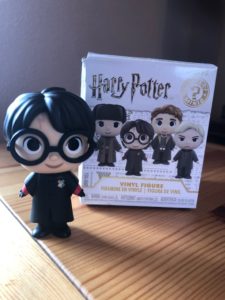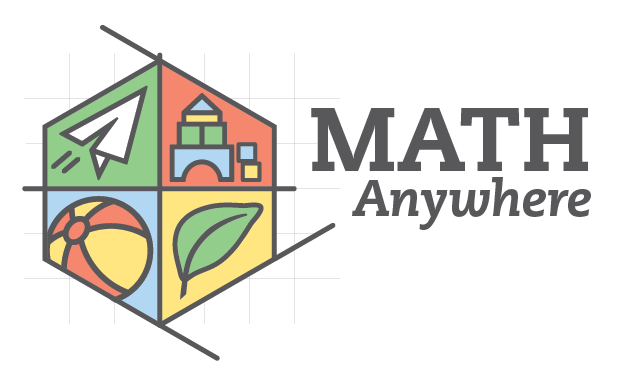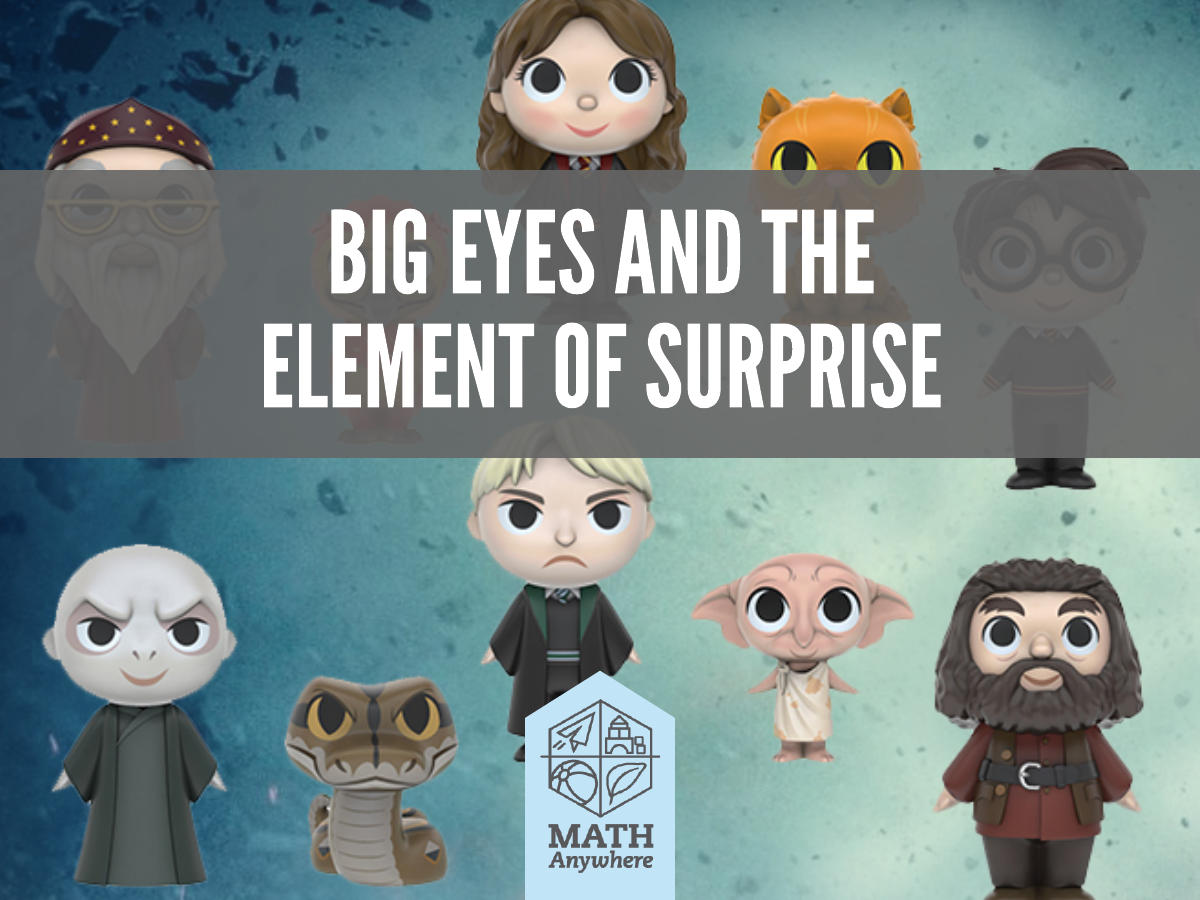 To market anything to the 10 and under crowd these days all you need to do is add some big eyes and the element of surprise. For my son (10) and my niece (8) this holiday Harry Potter Mystery Mini-figures became the obsession. With one figure each in hand we started our seven store sold-out toy search for more. I eavesdropped in on their backseat chatter as we traveled from store to store.
To market anything to the 10 and under crowd these days all you need to do is add some big eyes and the element of surprise. For my son (10) and my niece (8) this holiday Harry Potter Mystery Mini-figures became the obsession. With one figure each in hand we started our seven store sold-out toy search for more. I eavesdropped in on their backseat chatter as we traveled from store to store.
 The back of the box kept them occupied as they began to categorize the figures into four groups: 1) common – 1/6 odds 2) uncommon- 1/12 odds 3) rare – 1/24 odds and 4) epic – 1/36 odds. They went on to discuss their ideas about how many you would have to buy to get all 12 figures in this series. They also had boxes from 2 different series, which both included Harry Potter, of course. “How many Harry’s would you get if you tried to collect all the figures?” they wondered. And, “What are the chances we both get an ‘epic’?” and “What are the chances we get the same figure?” Somehow, nobody but me was wondering, “How many stores will we have to visit?” or “How many miles have we covered so far?” Occasionally they turned to the calculator on my phone to work out some of their reasoning. I have no idea if their math was correct. This is partly because my attention was on the road, but also because it didn’t really matter to me in that moment if it was. This was a mathematical conversation between two kids who were motivated to explore this situation. What more can I ask? I work hard to be patient and accepting of math ideas, trusting that correct methods will show up with time. I don’t need to do anything in this moment, but listen. Even by asking a question I might run the risk of derailing the conversation, or zapping their energy.
The back of the box kept them occupied as they began to categorize the figures into four groups: 1) common – 1/6 odds 2) uncommon- 1/12 odds 3) rare – 1/24 odds and 4) epic – 1/36 odds. They went on to discuss their ideas about how many you would have to buy to get all 12 figures in this series. They also had boxes from 2 different series, which both included Harry Potter, of course. “How many Harry’s would you get if you tried to collect all the figures?” they wondered. And, “What are the chances we both get an ‘epic’?” and “What are the chances we get the same figure?” Somehow, nobody but me was wondering, “How many stores will we have to visit?” or “How many miles have we covered so far?” Occasionally they turned to the calculator on my phone to work out some of their reasoning. I have no idea if their math was correct. This is partly because my attention was on the road, but also because it didn’t really matter to me in that moment if it was. This was a mathematical conversation between two kids who were motivated to explore this situation. What more can I ask? I work hard to be patient and accepting of math ideas, trusting that correct methods will show up with time. I don’t need to do anything in this moment, but listen. Even by asking a question I might run the risk of derailing the conversation, or zapping their energy.
Thankful for my Barnes and Noble educator discount and holiday gift money from family, they each left with two more mini-figures. After working out the rules for how they would open them (each of them went to a separate room and called out the category of probability before revealing) on the way home, they finally opened their boxes. The dreaded duplicate…a painful life lesson in experimental probability. And yet, another opportunity to work out rules about trading and fairness of trades based on the commonality of the figure. Odds are there are more mystery mini-figure math discussions to come in my house.

Molly Daley
Molly Daley is a Regional Mathematics Coordinator at ESD 112 in Vancouver, WA. She started the Math Anywhere! project to help children and their grown-ups experience the creative and playful side of mathematics. As soon as she learned there was more to math than the rules she memorized in school, Molly was hooked. She believes math is expansive and she likes helping people recognize their own mathematical connection.

